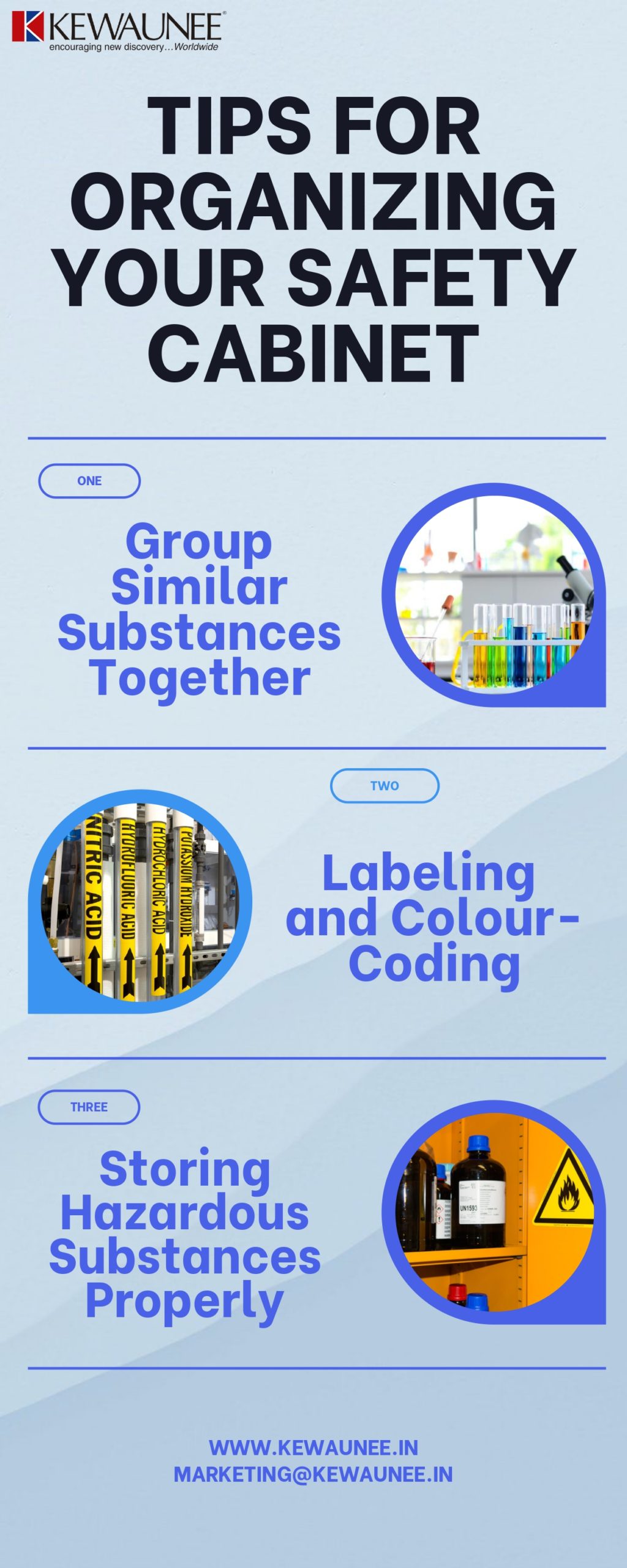Tips for Organizing your Safety Cabinet
A well-organized safety cabinet is essential in maintaining a safe work environment. Hazardous substances, such as flammable liquids, corrosive substances, and toxic substances, pose a significant risk if they are not stored properly.
Keeping your safety cabinet organized is crucial in ensuring the safety of those who work around these substances.
Types of Safety Cabinets
There are different types of safety cabinets that are designed to store different types of hazardous substances.
- Flammable Liquid Safety Cabinets: These cabinets are specifically designed to store flammable liquids, such as gasoline, alcohol, and paint thinners.
- Corrosive Substance Safety Cabinets: These cabinets are intended for the storage of corrosive substances, such as acids and bases.
- Poison and Toxic Substance Safety Cabinets: These cabinets are used for storing poisons and toxic substances, such as pesticides, cleaning chemicals, and other hazardous materials.
Preparing for Cabinet Organization
Before organizing your safety cabinet, it’s essential to prepare by taking an inventory of the contents and determining the size and capacity of the cabinet. This will help you to identify the needs and priorities for organizing the cabinet.
- Inventory of Contents: Take note of the type and quantity of hazardous substances in the cabinet.
- Determining Cabinet Size and Capacity: Measure the cabinet to ensure that the size and capacity will accommodate the contents.
- Identifying Needs and Priorities: Determine what is most important in the organization of the cabinet, such as easy access to frequently used items or grouping similar substances together.
Organizing the Cabinet
Organizing the cabinet involves grouping similar substances together, labeling and Colour-coding, and storing hazardous substances properly.
- Grouping Similar Substances Together: Store similar substances together to ensure that they are easy to locate and reduce the risk of contamination.
- Labeling and Colour-Coding: Label the contents of each cabinet and use Colour-coding to quickly identify the type of substance stored.
- Storing Hazardous Substances Properly: Store hazardous substances in the correct way to ensure that they are stored safely and securely.
Tips for Maintaining an Organized Safety Cabinet
Maintaining an organized safety cabinet requires regular cleaning and inspection, staying current with inventory, and proper usage and handling of hazardous substances.
- Regular Cleaning and Inspection: Clean the cabinet regularly to ensure that it is free from dust and debris. Inspect the contents of the cabinet regularly to ensure that they are stored correctly and safely.
- Staying Current with Inventory: Keep track of the inventory in the cabinet to ensure that it is up-to-date.
- Proper Usage and Handling of Hazardous Substances: Always handle hazardous substances with care and follow proper usage guidelines to minimize the risk of accidents.
Conclusion
Organizing your safety cabinet is essential in maintaining a safe work environment. By taking the time to properly organize the cabinet, you can ensure that hazardous substances are stored correctly and that they pose minimal risk to those who work around them.
The tips provided in this blog will help you to keep your safety cabinet organized and ensure that it is properly maintained. Remember that the importance of cabinet organization cannot be overstated, and it is essential in ensuring the safety of your work environment.
Comments are closed.











